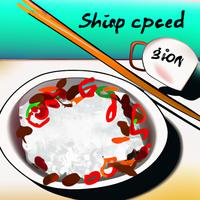
1 serving (150 grams) contains 200 calories, 4.0 grams of protein, 0.3 grams of fat, and 45.0 grams of carbohydrates.

Log this food in SnapCalorie

Nutrition Information
Calories |
266.7 | ||
|---|---|---|---|
% Daily Value* |
|||
| Total Fat | 0.4 g | 0% | |
| Saturated Fat | 0.1 g | 0% | |
| Polyunsaturated Fat | 0 g | ||
| Cholesterol | 0 mg | 0% | |
| Sodium | 2.7 mg | 0% | |
| Total Carbohydrates | 60 g | 21% | |
| Dietary Fiber | 0.7 g | 2% | |
| Sugars | 0.1 g | ||
| protein | 5.3 g | 10% | |
| Vitamin D | 0 mcg | 0% | |
| Calcium | 13.3 mg | 1% | |
| Iron | 0.3 mg | 1% | |
| Potassium | 40 mg | 0% | |
* Percent Daily Values are based on a 2,000 calorie diet. Your daily values may be higher or lower depending on your calorie needs.
Food Attributes
Source of Calories
About Cooked japanese rice
Cooked Japanese rice, or "gohan," is a staple in Japanese cuisine, often paired with a variety of dishes like sushi, donburi, and curries. Typically made with short-grain rice, such as Japonica or Calrose varieties, it has a soft, sticky texture that sets it apart from other rice types. Nutritionally, cooked Japanese rice is a source of carbohydrates that provide energy and a small amount of protein, along with trace amounts of essential nutrients like magnesium and selenium. While naturally low in fat and sodium, its healthfulness depends on portion size and preparation methods; adding sauces or toppings may increase calorie and sodium content. Rich in fiber when paired with brown or mixed-grain varieties, Japanese rice can support digestion. Its simplicity, versatility, and cultural significance make it a foundation of balanced meals in Japanese cuisine.



